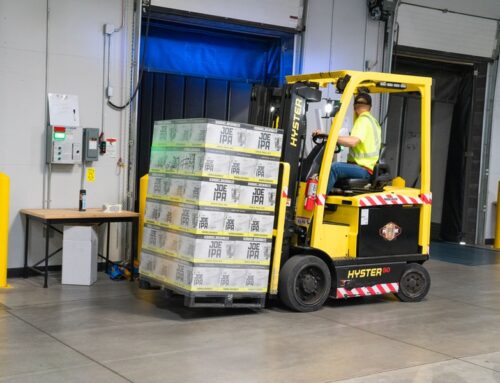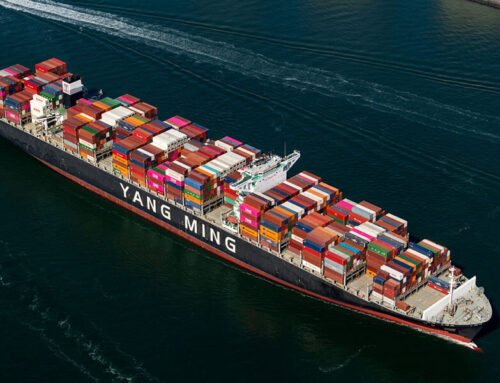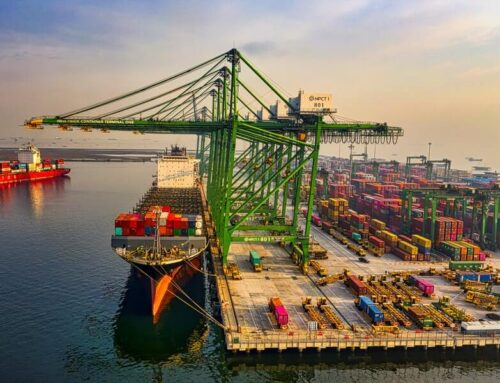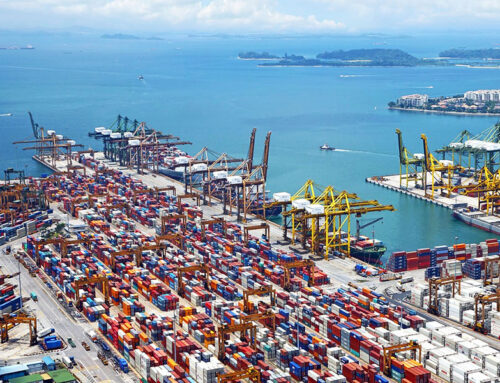 As customers return to stores, the significant increases made during the lockdowns have slowed. However, fulfillment companies continue to invest in expansion, anticipating that people’s shopping habits will alter in the long run.
As customers return to stores, the significant increases made during the lockdowns have slowed. However, fulfillment companies continue to invest in expansion, anticipating that people’s shopping habits will alter in the long run.
Shoppers may have returned to the mall, but e-commerce companies are wagering that they will have a firm grip on their digital shopping carts when economic restrictions lesson.
Logistics companies that grew during the Covid-19 online-ordering boom say they’re keeping their investments and optimistic outlooks. They believe that the rush to online commerce during the outset of the pandemic has changed purchase behavior in the long run.
“There may be some tweaking, but the jump we took from the pandemic is here to stay,” said Kraig Foreman, president of e-commerce for DHL Supply Chain North America, a division of Deutsche Post AG.
The shift to online shopping has spurred tremendous growth at retailers like Amazon.com Inc. and brick-and-mortar shops like Walmart Inc. and Target Corp. that have extensive digital capabilities.
According to Adobe Analytics, which measures activity on dozens of websites, e-commerce sales in the United States increased 42 percent last year to $813 billion. The rise of digital commerce fueled rapid expansion in distribution operations, resulting in multimillion-dollar investments in supply-chain technology and companies like Shopify Inc., Radial Inc., and ShipBob Inc. that provide services to meet online shopping demand.
However, last year’s growth has slowed, and new studies suggest that as governments relax lockup restrictions, revenue is returning to physical stores and eateries.
According to the most recent estimates from the U.S. Commerce Department, sales at nonstore retailers, including online merchants, decreased to $87.72 billion in April, a 0.6 percent decrease from March on an adjusted basis, but were 14.5 percent higher than year-ago levels.
In the first quarter of 2020, e-commerce accounted for 13.6 percent of total retail sales in the United States, the same percentage as during the Christmas shopping season in the fourth quarter of 2020, but down from last year’s quarterly high of 15.7 percent in the second quarter.
The shifting sales patterns emphasize the risks for businesses that have profited from changes in consumer buying habits over the last year and are now attempting to figure out how much online shopping can survive the pandemic. According to a poll of more than 1,000 consumers conducted by consulting firm AlixPartners LLP in late March and early April, one-third of U.S. shoppers plan to continue buying clothing online, while 25% want to continue ordering groceries online.
Mr. Foreman of DHL said that online commerce is causing “a lot of work building new distribution centers and recalibrating networks.” In addition, logistics operators and retailers are investing in information technology and automation to speed up the flow of goods. However, that inventory is still shifting away from retail stores and toward e-commerce fulfillment.
“Many brands are starting to think about what their long-term strategy looks like… and that change in their business model, that increased e-commerce mix,” said Ilias Simpson, CEO of Radial, an online fulfillment, and technology provider based in King of Prussia, Pa. Their customers include Cole Haan and Ashley Stewart. “For their e-commerce business, most of the brands we work with have highly ambitious growth targets.”
Mr. Simpson added that since the peak of the pandemic, Radial’s total volumes had decreased. However, demand remains higher than in 2019, and the company is expanding its distribution hubs in North America and Europe.
Several brand executives have told Mr. Simpson that sales haven’t recovered to pre-pandemic levels while shop foot traffic is increasing. He stated that because stores are still struggling to refill goods, “you can window-shop but still need to purchase online” in some circumstances.
Volumes declined 5% from April to May at Ship Hero LLC, which provides e-commerce software and fulfillment services through seven U.S. warehouses.
Founder and Chief Executive Aaron Rubin said of the company, which does business as ShipHero, that “it’s the only down month we’ve experienced since Covid, except December to January,” after the holiday shopping boom. “There is also a significant shift in what is selling, with travel products performing well and pet products remaining strong, while apparel, home, and baby [things] are underperforming,” he added.
ShipHero’s online order volumes were up more than 150 percent year over year, despite the lower volume. Overall, business is roughly two-and-a-half times what it was before the epidemic, he said.
ShipMonk Inc., a fulfillment expert based in Fort Lauderdale, Fla., said e-commerce orders from established clients had decreased recently compared to peak Covid-19 levels, despite spending nearly $12 million on warehouse technology to accommodate rising online demand.
Nonetheless, orders for those clients increased by more than threefold in 2019, and the firm continues to intend to expand its warehouse network in the United States, Europe. Mexico to complement its existing facilities in Florida, Pennsylvania, and Southern California.
“When you put in the addition of 1,000 additional companies, our entire volume skyrockets,” said Kevin Sides, Chief Revenue Officer.
ShipBob, a Chicago-based e-commerce fulfillment company, has opened ten facilities this year, bringing its total to 24 in the United States and Europe. Chief Marketing Officer Casey Armstrong said the company could add up to 10 more by the end of the year. “We see this buying behavior as the new standard in the United States and around the world,” he said.
Such changes drive rising demand for warehouse space, particularly near major population centers, a trend that logistics companies expect to continue even as more people return to stores.
Chris Caton, managing director of global strategy and analytics at Prologis Inc., one of the world’s top industrial real estate owners, said, “We’re running out of land for our projects.” “I believe demand in our industry will be stable. It can take years, not days, weeks, or months, to decide to develop a supply chain.”
Synopsis based on WSJ’s article.







Leave A Comment